Все про видеонаблюдение
Все про умный дом
Все о пожарной безопасности
Сейчас читают
 Как ускорить и смотреть ютуб без тормозов и замедленияЕсли Вы на этой странице, то Вам, скорее всего, […]
Как ускорить и смотреть ютуб без тормозов и замедленияЕсли Вы на этой странице, то Вам, скорее всего, […] 10 лучших прогрессивных языков программирования для разработки мобильных приложенийЗнаете ли вы, что мобильные приложения — это не только […]
10 лучших прогрессивных языков программирования для разработки мобильных приложенийЗнаете ли вы, что мобильные приложения — это не только […] 6 важных особенностей, которые следует учитывать при строительстве нового домаСтроительство нового дома – это уникальная возможность […]
6 важных особенностей, которые следует учитывать при строительстве нового домаСтроительство нового дома – это уникальная возможность […]
Гороскоп на Сегодня
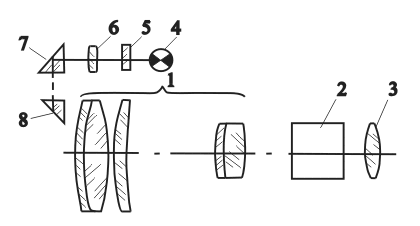
Small-sized night sights.
VOLKOV Viktor Genrikhovich, Candidate of Technical Sciences, Associate Professor
Currently, night vision devices have become widespread in special equipment [1].
Among them, night sights play a significant role, which are widely used for shooting from individual hunting, sporting and combat weapons.
This article discusses various types of night sights made on the basis of electron-optical converters (EOC) of various generations, television (TV), thermal imaging (TIV) sights, as well as a combined dual-spectrum sighting device.
Night sights for light individual small arms can be made on the basis of any generation of EOP — from zero to fourth.
Technical parameters of night sights are summarized in Table 1.
A distinctive feature of night sights is the presence of a projection device in the field of view of the device of the aiming scale (mark, sighting mark).
Possible options for projection schemes are given in Fig. 1, 2 [2]. Currently, only projection into the ocular part of the night sight is used.
This is due to the reflection of the illumination radiation of the sighting scale from the photocathode of the image intensifier tube towards the enemy when the scale is projected through the sight lens, which results in its unmasking.
The devices contain handwheels for adjusting the position of the sighting scale in azimuth and in the angle of the target's elevation. The design of the night sight provides for the possibility of its installation on the weapon using the appropriate bracket for side or axial mounting.
A distinctive feature of night sights is the significant removal of the exit pupil of the eyepiece, reaching 50 — 70 mm to avoid eye damage due to the recoil of the weapon during shooting.
The sights use a rubber eyecup of the «cat's eye» type, which not only fixes the eye in relation to the eyepiece, but also tightly covers the eyeball, eliminating the unmasking reflection of light from the EOP screen from the retina of the eye towards the enemy.
Some models of sights have the ability to automatically turn off the device when the eyepiece loses contact with the shooter's eye to avoid the above-mentioned unmasking.
The design of some sights provides for the ability to adjust the eyepiece diopter, while other sights do not have it in order to give the design rigidity.
Mostly, night sights have constant magnification.
Some sights have variable magnification due to the use of a pancratic eyepiece, for example, the PNP-1, PNP-3 models (RF, JSC ZOMZ).
The appearance of typical sights based on an image intensifier tube for light small arms is shown in photo 1.
Table 1. Comparative characteristics of night sights (according to company brochures)
a)
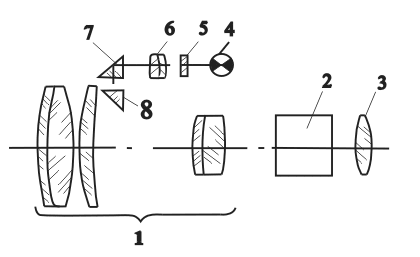
б)
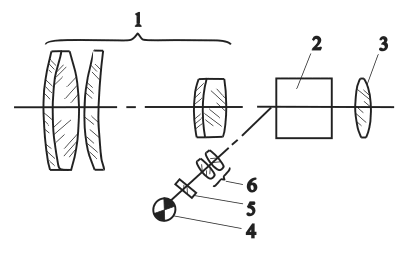
c)
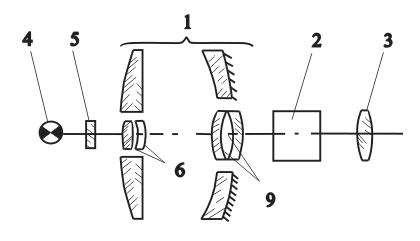
d)
Fig. 1. Schemes of the projection of the aiming mark in the field of view of a night sight through its objective: through the entrance pupil of the objective (a); through its lens components (b); direct projection onto the photocathode (c); through a non-working hole in the central part of the first lens-mirror of the catadioptric objective (g), where 1 is the objective, 2 is the image intensifier, 3 is the eyepiece, 4 is the light source (LED), 5 is the aiming scale (mark), 6 is the projection objective, 7, 8 are prisms, 9 is a two-lens compensator of field aberrations
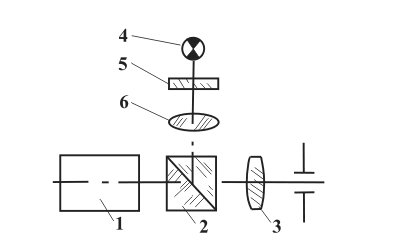
a)
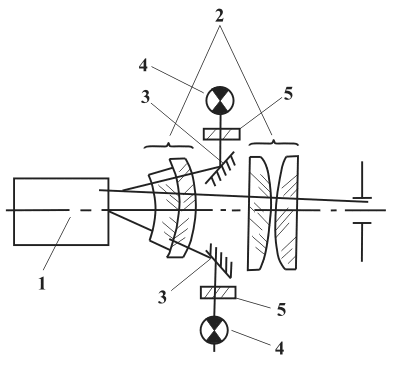
b)
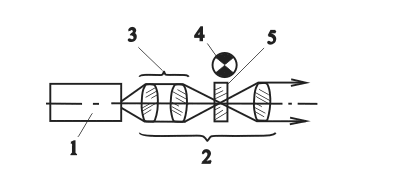
c)
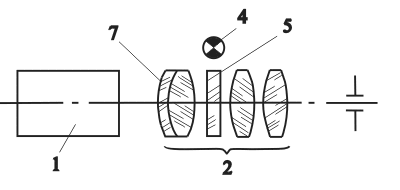
d)
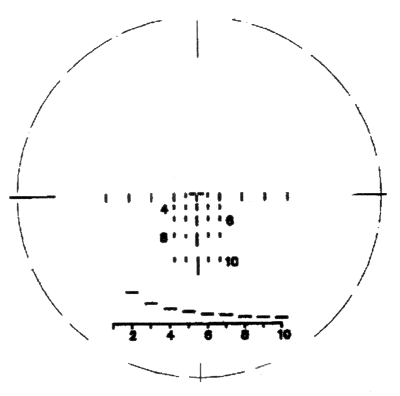
e)
Fig. 2. Schemes of the projection of the aiming mark in the field of view of the sight through its ocular system:
a) through an eyepiece using a beam-splitting element (prism cube);
b) with projection through the periphery of the eyepiece lenses;
c) through a microscope; d — through an eyepiece with a dichroic optical surface, where 1 is an image intensifier, 2 is a prism cube, 3 is an eyepiece, 4 is a light source, 5 is a sighting scale (mark), 6 is a projection lens, 7 is a dichroic optical surface;
d) a typical view of the field of view of a night sight
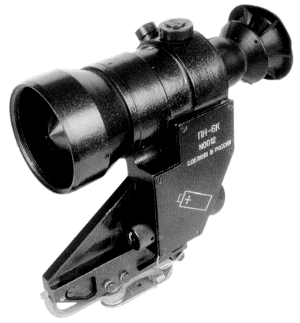
a) PN-6K (RF, State Unitary Enterprise PA Refinery);
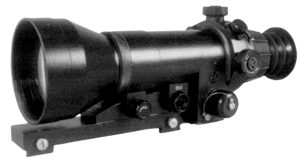
b) PN15K (RF, State Unitary Enterprise for Oil Refinery);
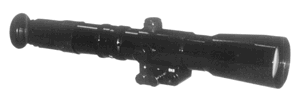
c) PNP-1 (RF, JSC ZOMZ);
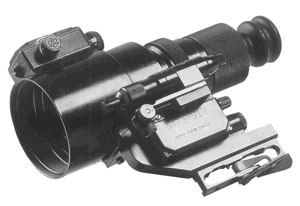
d) NV/S-9 (Belarus, Belomo);
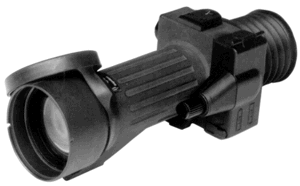
d) OV-50 (France, SAGEM);

e) AN/PVS-4A, AN/TVS-5 (USA, Litton)
Photo 1. Typical night sights based on image intensifier tubes.
Night collimator sights use the effect of projection into infinity of the aiming scale with simultaneous observation of the target and its surrounding terrain.
The main parameters of such sights are summarized in Table 2, and the appearance of a typical sample is shown in Photo 2.
Such sights are more compact than traditional sights, allow freedom of eye position in relation to the sight, but do not differ in high magnification.
It is possible to operate a daytime collimator sight with night vision goggles or with a night head-mounted monocular, which is located at the exit of the collimator sight [3].
Table 2. Night collimator sights (according to company brochures)
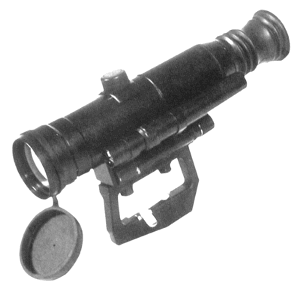
Photo 2. Collimator night sight PKN-013
“Coyote” (Republic of Belarus, Belomo)
For shooting on the move, during landing, night sighting systems are used, consisting of night vision goggles and a laser target designator mounted on the weapon [4].
The laser target designator is adjusted so that when firing, the bullets hit the light spot it forms on the target, which is visible in the night vision goggles.
The main parameters of such sighting systems are given in Table 3, and the appearance of a typical system is in Photo 3.
Table 3. Main parameters of night sights for portable anti-aircraft missile systems (according to company brochures)
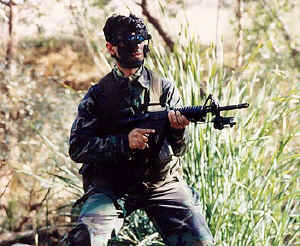
Photo 3. Laser night sighting system
by ASELSAN (Turkey)
Night sights for group weapons are used when firing from heavy machine guns and grenade launchers, from recoilless guns (Table 1).
A typical appearance of such a sight is shown in photo 4. In fact, sights differ mainly in the significant focal length of the lens.
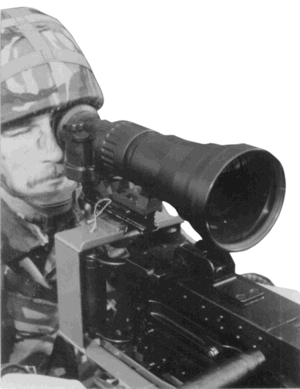
Photo 4. Night sight for group weapons MAXI KITE
(Great Britain, Pilkington P.E. Ltd.)
Night sights for anti-aircraft missile systems (Table 4) have the appearance shown in photo 5.
The sights allow detection of aircraft (aircraft, helicopters) at significant distances and have a large field of view, which is often insufficient for working on fast-moving targets.
In this regard, such sights are connected to a radar detection station, which ensures the acquisition and tracking of the target before it appears in the field of view of the night sight.
Table 4. Main parameters of night laser sighting systems (according to company brochures)
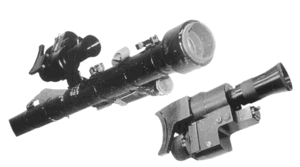
a) GEO-ZRK1 (RF, Geophysics -NV);
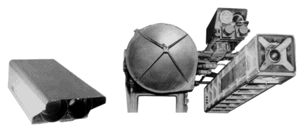
b) GEO-PZR2 (RF, Geophysics-NV);

c) F4960 (USA, ITT)
Photo 5. Night sights for SAMs:
The sights can be additionally equipped with an IR illuminator for operation in complete darkness [4] (photo 6), a heat detector for detecting hidden objects by their thermal radiation [5] (photo 7) and a laser rangefinder [6] (photo 8).
Along with the latter, modern sights use a miniature meteorological station with temperature, pressure, humidity and wind direction sensors, as well as a microprocessor ballistic computer that allows for automatic adjustments to the position of the aiming line [7].
An example of a night sight-rangefinder is the NVL-11 night system (photo 8) from International Technologies (Lasers) Ltd. (Israel) for controlling grenade launcher fire (Table 1).
The system's built-in laser rangefinder has a wavelength of 0.84 μm, a radiation power of 100 mW, and range measurement limits from 20 to 990 m with an accuracy of 10 m.
The ballistic computer automatically sets the line of sight position at a target elevation angle of up to 70 mrad with a range resolution of 5 m with an angular accuracy of ±0.5 mrad.
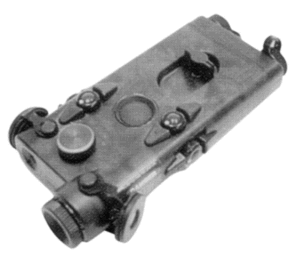
Photo 6. IR illuminator-target designator for night sights
AN/PAQ-2 by Litton (USA)
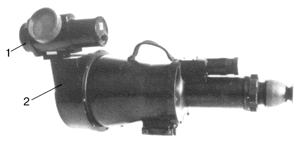
Photo 7. SS50 heat detector (item 1)
(Great Britain, Rank Precision Industries)
for use with a night sight (item 2)
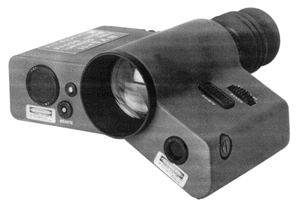
Photo 8. NVL night sight-rangefinder
by International Technologies (Lasers) Ltd. (Israel)
For work in both day and night conditions, day/night sights are used [8].
In particular, the combined hunting sight PDN from ZOMZ (RF) (photo 9a) has a magnification of 2.5 and 6.2x in “day” and “night” modes, respectively, a field of view of 4.5-40 and 7.3-40, a weight of 1.6 kg, and dimensions of 395x125x86 mm [8].
The Litton company (USA) also developed the AN/PVS-10 day/night sight (Table 1) (photo 9b).
The Dedal-DN530 Dedal-NV daytime sight (RF) has a replaceable eyepiece attachment that allows switching from “day” to “night” mode” [8].
The use of such sights has not become widespread, since the simultaneous presence of day and night channels in them leads to an increase in weight and dimensions.
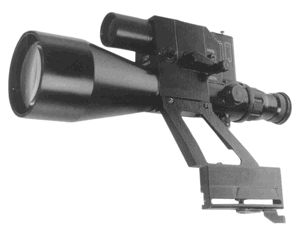
a) PDN (RF, OAO ZOMZ);
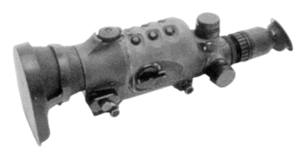
b) AN/PVS-10 (USA, Litton)
Photo 9. Day-night sights.
In some cases, even daytime optical sights are used in combination with visible light illuminators, which are mounted under the weapon barrel (photo 10) [8].
For example, the “Znich” illuminator (Belarus, Belomo) [8] has 100 m, an illumination angle of 4.80, power supply = 4.8 V, weight 0.33 kg, dimensions 155x45x42 mm (photo 10a).
The weapon flashlight with a laser target designator “Korsak-1” (photo 10b) from the same company has a range of 100 m, an illumination angle of 60, a supply voltage of 6 – 12 V, a weight of 0.25 kg, and dimensions of 110x50x65 mm.
The laser target designator has an operating wavelength of 645 nm, a radiation power of 3 V, an illumination angle of 2.40, a supply voltage of 3 V, and a horizontal and vertical adjustment flow rate of ±150.
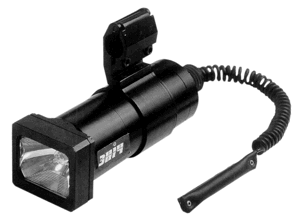
a) “ZNICH” underbarrel flashlight;
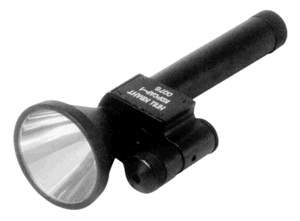
b) flashlight with laser target designator “Korsak-1”
Photo 10. Flashlights for weapons for joint
work with a sight (Republic of Belarus, Belomo):
Low-level television sights can provide, like the laser sighting systems described above, the ability to fire from any position of the weapon and even from cover if there is a head-mounted TV indicator [9].
The Ares-1 night TV sight was developed for training special forces in low-light conditions [9].
Its range at a natural night illumination level of 10-3 lux is 50 m, the field of view is 5×90, the weight of the telescope and devices installed on the weapon is 0.7 kg, the dimensions of the telescope with a holder are 214x100x62.5 mm, the supply voltage is 12 V [9].
The Argus-23” night television sight with a built-in small-sized illuminator has a detection range of a full-length human figure at a natural night illumination level of 3×10-3 lux over 350 m, in complete darkness (with illuminator) up to 100 m, a field of view angle of 8 – 100, a range of adjustment of the aiming line in height and direction of ±(0 20), supply voltage = 12 V.
The sight consists of an optical-electronic module (low-level television camera) mounted on the weapon weighing 1.6 kg and measuring 222x166x105 mm, a visualization module based on a small-sized TV monitor mounted on the operator's face mask weighing 0.9 kg and measuring 198x175x127 mm, a power module (battery) weighing 1.3 kg and measuring 164x120x127 mm (photo 11) [9].
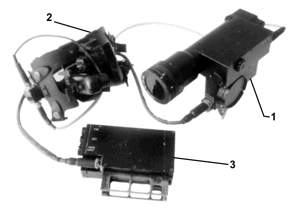
Photo 11. Night television sight for firing from cover “Argus-23” in the working position:
1 – optical-electronic module,
2 – head-mounted visualization module,
3 – power module
Thermal imaging sights (Table 5) can operate in a wide range of changing external conditions: fog, rain, snowfall, in some smoke, when exposed to light interference [10].
The appearance of typical thermal imaging sights is shown in photos 12, 13.
Like low-level TV sights, thermal imaging sights can be built on the principle of safe shooting from cover with a head-mounted indicator [9].
In particular, the Argus-31 night thermal imaging sight, based on an uncooled microbolometer matrix and operating in the 8-12 μm spectrum, has a full-length human figure recognition range of up to 100 m (when installing a lens with a focal length of f’ = 25 mm) and up to 750 m (for a lens with f’ = 93 mm) with a field of view angle of 18×140 and 4019×3014, respectively [9].
In this case, the adjustment range of the electronic aiming mark in relation to the center of the field of view is vertically and horizontally not less than ± (0 — 15), the power consumption is more than 2.5 W at a supply voltage of = 12 V. The composition and layout of the sight is the same as shown in photo 11.
Table 5. Main parameters of thermal imaging sights for individual weapons (according to company brochures)
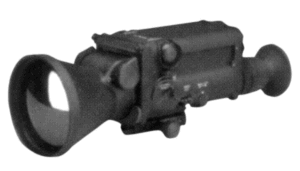
Photo 12. Thermal imaging sight for individual weapons:
model W1000-9 by Raytheon (USA)
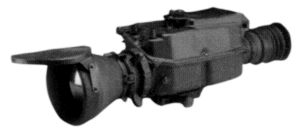
Photo 13. Thermal imaging sight for group weapons:
model Heavy TWS by Raytheon (USA)
It is also possible to create combined night sights consisting of a low-level TV and thermal imaging channels [9].
Such sights also provide firing from closed positions.
For example, the dual-spectrum surveillance and sighting system “Veko” for automatic weapons consists of a low-level TV channel for the spectrum range of 0.6-0.9 μm and an uncooled thermal imaging channel for the spectrum range of 8-14 μm.
The detection range of a full-length human figure under standard conditions is 500 m, recognition under the same conditions is 300 m, the field of view angle is not less than 60, the range of the aiming line adjustment in height and direction is 0-08, the supply voltage is 12 V, the power consumption is 7.5 W.
The optical-electronic module weighs 3.2 kg, the dimensions are 280.5x210x50.5 mm, the head-mounted sighting module is 0.9 kg and 198.5x175x127 mm, the power supply module is 1.3 kg and 164×120.5×63 mm [9].
The presence of two channels allows all-weather operation in a wide range of changing external conditions.
An analysis of modern trends in the development of night vision devices and night sights in particular shows that the use of combined devices is a logical direction for the future improvement of devices, which does not exclude the creation of simple, relatively cheap single-channel systems.
Literature
1. Geykhman I.L., Volkov V.G. Fundamentals of Improving Visibility in Difficult Conditions. Moscow: Nedra-Business Center, 1999, 286 p.
2. Volkov V.G. Principles of constructing night sights. Defense complex – scientific and technical progress of Russia, 2002, №1, pp. 20 – 24.
3. C.Q. Cutshaw. The M4A1 Close Quarters Battle Weapon. Jane’s International Defense Review, 2001, №1, pp. 59 – 61.
4. Volkov V.G. Laser illuminators and target designators for night vision devices.//Special equipment. 2002, №2, pp. 2 – 10.
5. Volkov V.G. Multi-channel night vision devices for ground use.//Special equipment, 2001, №2, pp. 13 – 20.
6. Volkov V.G. Portable laser rangefinders.//Special equipment, 2001, No.6, pp. 2 – 13.
7. Cutshav C.Q. Blasing a trail with R93. Jane's International Defense Review, 2002, N4, pp. 60 – 62.
8. Volkov V.G. Day-night sight technology.//Special equipment, 2001, No.4, pp. 2 – 7.
9. Catalog of devices. KTI Applied Microelectronics SB RAS. RF, Novosibirsk, 2003.
10. Volkov V.G., Kovalev A.V., Fedchishin V.G. Thermal imaging devices of the new generation.//Special equipment, 2001, No. 6, pp. 16–21, 2001, No. 1, pp. 18–24, 26.






Добавить комментарий